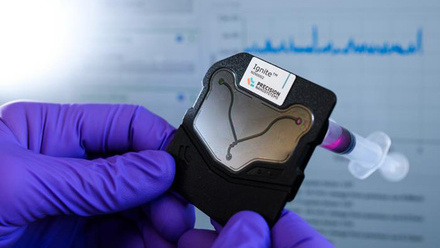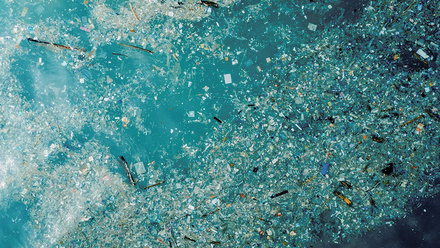Mussels inspire mucus-like biomedical adhesive
The glue could coat medical implants to prevent infection and bacteria build-up.

Biomedical engineers at Massachusetts Institute of Technology (MIT), USA, and Freie Universität Berlin, Germany, have combined the waterproof stickiness of mussel-inspired polymers with the germ-fighting properties of mucus-derived proteins, mucins, to form a cross-linking gel that strongly adheres to surfaces.
Mussels can stick to wet surfaces, a longstanding technological challenge, and mucus is known to exhibit desirable bioactive properties – such as the ability to discourage biofouling.
'Mussels are able to deposit materials that adhere to wet surfaces in seconds to minutes,' says Postdoctoral Researcher at MIT George Degen. 'These natural materials do better than existing commercialised adhesives, specifically at sticking to wet and underwater surfaces.'
To stick to a rock or a ship, the mussels secrete a protein-rich fluid. Cross-links act as connection points between the proteins, enabling the secreted substance to simultaneously solidify into a gel and stick to a wet surface.
Meanwhile, similar cross-linking features are found in mucin – a large protein that is the primary non-water component of mucus.
The advance at MIT offers a strategy for simultaneously achieving gelation and adhesion of natural and synthetic polymers, including mucin proteins.
For their work, the researchers focused on a chemical motif that appears in mussel adhesives – a bond between two chemical groups known as catechols and thiols. In the mussel’s natural glue, or plaque, these groups combine to form catechol-thiol cross-links that contribute to the plaque’s cohesive strength. Thiol groups are also prevalent in mucin proteins.
MIT’s material is made from polymers that are functionalised by the covalent cross-linking between the catechol and thiol groups, resulting in the formation of adhesive hydrogels.
An advantage of this approach is the ability to tune the properties of the resulting gels. The researchers report to have changed the elastic modulus by a factor of 10,000, and the adhesive properties by more than 100 times. Although they did not specifically optimise for adhesion, they hope to explore this in future studies.
'It’s like a two-part epoxy. You combine two liquids together, and chemistry starts to occur so that the liquid solidifies while the substance is simultaneously glueing itself to the surface,' Degen says.
He continues, 'We tested three thiolated polymer systems – 4-arm polyethylene glycol (PEG), purified mucin proteins and synthetic mucin-inspired polymers. We combined these polymers with catechol-functionalised crosslinkers composed of either PEG or polyglycerol.'
He claims, 'We demonstrate adhesion to wet tissue and metal-oxide surfaces, important substrates for biomedical applications. Moreover, our mucin-derived hydrogels discourage the formation of bacterial biofilms, raising the possibility of antifouling coatings.'
The team tested this by depositing a range of compositions between two surfaces and found that the resulting adhesive held the surfaces together, with forces reportedly comparable to the commercial medical adhesives used for bonding tissue. The researchers also tested the adhesive’s bacteria-blocking properties by depositing the gel onto glass surfaces and incubating them with bacteria overnight.
'Depending on how much cross-linking you have, we can control the speed at which the liquids gelate and adhere,' adds Rainer Haag of Freie Universität Berlin. 'We can do this all on wet surfaces, at room temperature and under very mild conditions. This is what is quite unique.'
Degen says they demonstrated their approach is compatible with a broad range of natural and synthetic polymers.
'We are now poised to expand our approach to encompass other thiol-rich biopolymers towards the development of applications, including sustainable packaging materials.'







